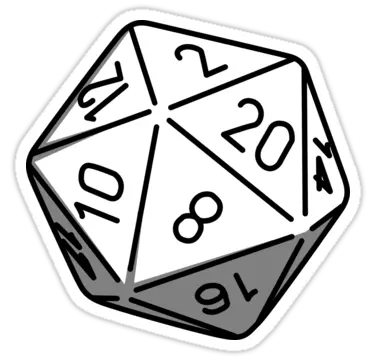The mode human body contains enough bones to make an entire skeleton. The average human body doesn’t have enough.
The additional ~200 bones from fetuses in late stage pregnant woman would be more than the missing bones from amputees etc. OPs statement is accurate.
Wouldn’t they be too small though?
Skeleton size or proportionality not specified.
You can’t use one unfused half-bone in place of one full bone >:(
What if we use the little fetus bones to replace some of the smaller adult bones, and take those smaller adult bones to replace some bigger adult bones, and so on until we have a big ol’ femur?
Actually, OP’s statement is still wrong because there are more bones than 1 entire skeleton on average.
The statement “the ocean contains enough water to fill a bucket” doesn’t mean the ocean only contains a single bucket of water. “The ocean contains enough water to fill one bucket” might imply that the ocean only contains one bucket of water but OP doesn’t specify a number. This is an interesting conversation on ambiguous semantics in English.
That’s a fair argument, and I suppose the average is somewhat close to one so it isn’t that misleading, but if aliens asked how much water was on your planet’s surface and you told them it was enough to fill a bucket, then you would be the asshole in that analogy.
The word average can technically refer to arithmetic mean, median, mode, or range. That’s why you were probably taught them at the same time. That’s also why tests like the ACT tend to have a * at the top that says something along the lines of “Unless otherwise stated, the word average indicates arithmetic mean.”
I have never in my life seen it refer to anything but the mean
Because mean is the most common form of average. But, for example, when referring to salaries, the words median and average are often used interchangeably.
This isn’t true at all
Edit: well they may be used interchangebly, but they’re also used incorrectly in that case
Actually, the average human body contains more than one skeleton.

This depends entirely on how many people there are out there with missing limbs.
It would have to be a lot considering that a baby has a full set of bones while a missing limb is generally only a few of them.
Half the bones in a adult human are in the hands and feet. I don’t know if there’s enough missing limbs to offset fetus skeletons but I there’s a whole lot of bones missing in a double amputee.
Babies have up to 270 bones at birth (instead of 206 in an adult), which makes up for at least one double amputee (hands have 27 bones and feet have 26 each).
Different perspective: Even if you miss a limb your body contains the full 100% of the skeleton you can find in a person missing that limb.
There still complete human beings even if their body has a unique challenge.
I appreciate what you’re saying here - people come in all shapes and sizes, with different abilities, limb counts, etc. Every one is a human being deserving respect and dignity.
But OP didn’t say “a complete human being” - it said “a complete human skeleton.”
If an individual is missing a limb, by birth or by accident, they don’t have a complete skeleton. It’s a plain fact. Doesn’t mean they are any less human.
I guess you could say they’re missing body parts, but not humanity parts (necessarily)
Yeah kind of - I think “a complete body” is neither necessary or sufficient to make one a “human being.”
For example, there are plenty of murderers, rapists, and pedos with “complete bodies,” that have entirely lost their humanity in commission of their crimes against humanity. (However, I will always argue that this can never be a justification to exact cruelty upon them, as we necessarily lose our humanity in that process).
And there are so many people with “incomplete” bodies who are amazingly beautiful and strong human beings.
Are infinitesimally shaved average bones not bones? Idk who is the bone authority responsible for making that decision.
There are a lot of people missing bones, but I don’t think anyone has extra, so….
What about people with extra fingers and toes? Parasitic twins?
Pregnant women as well. Now their human body contains two skeletons, thus raising the average number of bones in a human body by a considerable amount. I would guess there’s probably more pregnant women than there are people missing limbs.
Ok then technically we are all born with an extra set of teeth. That we lose. So a full skeleton contains all the baby teeth as well.
Traditionaly when talking about the skeleton, we refer to the adult skeleton seeing as an adolescent skeleton have more bones that then fuse. I agree that we need to take that into account, but I don’t believe the statement would be referring to an adolescent skeleton.
Oh yeah, totally forgot about pregnancy. That should count too.
Some people were born with extra fingers, and sometimes entire extra limbs.
Plenty of people do. My sister for example had bones in her feet that never fused and had to have an extra removed. I guess that’s pretty common
My wife has an extra rib above her collarbone.
No it doesn’t, because some people are missing limbs or ribs or have artificial joints. So the average body would have slightly fewer bones than necessary to make a whole skeleton.
Pregnant women would increase the average to greater than one complete skeleton per person.
But are those bones in the body of the pregnant woman, or is the body of the fetus a different set?
Same body, two sets
Even if you count the fetus as a human, the fetuses bones are still inside the pregnant woman. So there are still more than one skeleton on average inside humans.
Oh, don’t forget conjoined twins.
I was gonna say: who is out there rocking extra bones?
There’s mutations and hereditary conditions that give you extra bones
Would a broken bone count as 2?
Probably false, the avarage probably has a bit less then needed fo a full skeleton.
I’m quite sure it’s more, since some individuals contain multiple sets.
Its gonna be some stupid number, like 1.0777655678 skeletons per adult, on average. Even considering twins and triplets and quad amputees
Despite all the “AKcHUaLLy” comments this is probably true.
If the body has 206 bones and the global average is like 205.7, a bone that is even partially complete is still a bone, and it is probably so close to 206 that the missing parts are negligible and distributed across the skeleton anyway. Think about it, how many people do you know that are missing an appendage or a bone by defect? I bet it’s less than 0.5% of everyone you know.
Take my upvote.
I have 2 neighbours is missing a leg, and a family friend missing a finger. I am one of the outliers.
Did these people lose their limbs before or after they met you?
I only known them without limbs.
That is a lot of missing bones. How many people would you estimate that you know though? I went to a small high school and I bet out of 500 total I knew 300 just from school. There are lots of family and coworkers and stuff that drive that number pretty high even if you know some amputees.
Not many, i am an introvert.
But it still wouldn’t be an entire human skeleton, as there’s more to a skeleton than just the number of bones.
So by this logic, if you age and develop arthritis you no longer possess a complete human skeleton?
You’ve finally done it. You out-akchuallied the pedantic nerds, becoming, yourself, the final gatekeeper of pedantry
I feel like there should be a joke in here about giving someone’s mom an extra bone last night
HOW???!!! How is that possible? I blame illuminati for this.
Big (body) if true
Not true, average is higher than 1 entire skeleton.
You sure? I think it might be lower considering lost limbs and so. Pregnancies would raise it but pregnancy is temporary while lost limbs tend to be permanent.
I think we can assume some number above 0.1% to 1% of humans are pregnant at any given time, based on the number of births last year over a 9 month period divided by the number of people on earth total, but with the assumption that many aren’t carried to full term and end in loss of viability.
Each of those can have over 300 bones total, later on a lot of those would fuse so to create a full skeleton we should just consider it as 206.
Amputees numbered 57.7 Million people worldwide in 2017 or 0.8% but the vast majority of these are missing less than a single limb and retain most of their bones.
Removed by mod
Its all because of Joe
Who’s steve jobs?
Ligma balls
NOOOOOOOOO
Some people say there’s a spooky skeleton inside you right now!
technically, because noone has a higher amount of bones but many people have less, this is false.
that is true, but most of these would either be worse for building a skeleton because they deform other bones or do nothing because theyre just extra bits that wouldnt help anyway (in case its a disjointed bone)
noone has a higher amount of bones
You could have just said you learned something instead of trying to deflect by moving the goalposts.
thats true
It said enough, not the right set of
if the bones are wrong would it still be an entire skeleton?
It comes down to how you define the average. You have a person with a bone too much and one person with a bone too little. One person is small, the other is big. What is the average skeleton? What does that even mean?
thats the question we shouldve been asking all along
Again, the key word is “enough”. That implies that it’s about the number of bones, neither shape or form or size
Late stage pregnant woman have a higher amount of human bones
finally someone that doesnt just tell me there is a very rare disease that creates a single extra bone
anyway yeah if you count pregnant women the average skeletons in a human body is more than one
What about that one horrible disease where your muscles start turning into extra bones?
Rarer than getting a synthetic hip or being born without wisdom teeth, for example
or losing limbs
those bones dont help much in making a skeleton
Eeew no! Geddit out!

Surprising but true!
Nuh uh!
I guess we are all average… :)
















